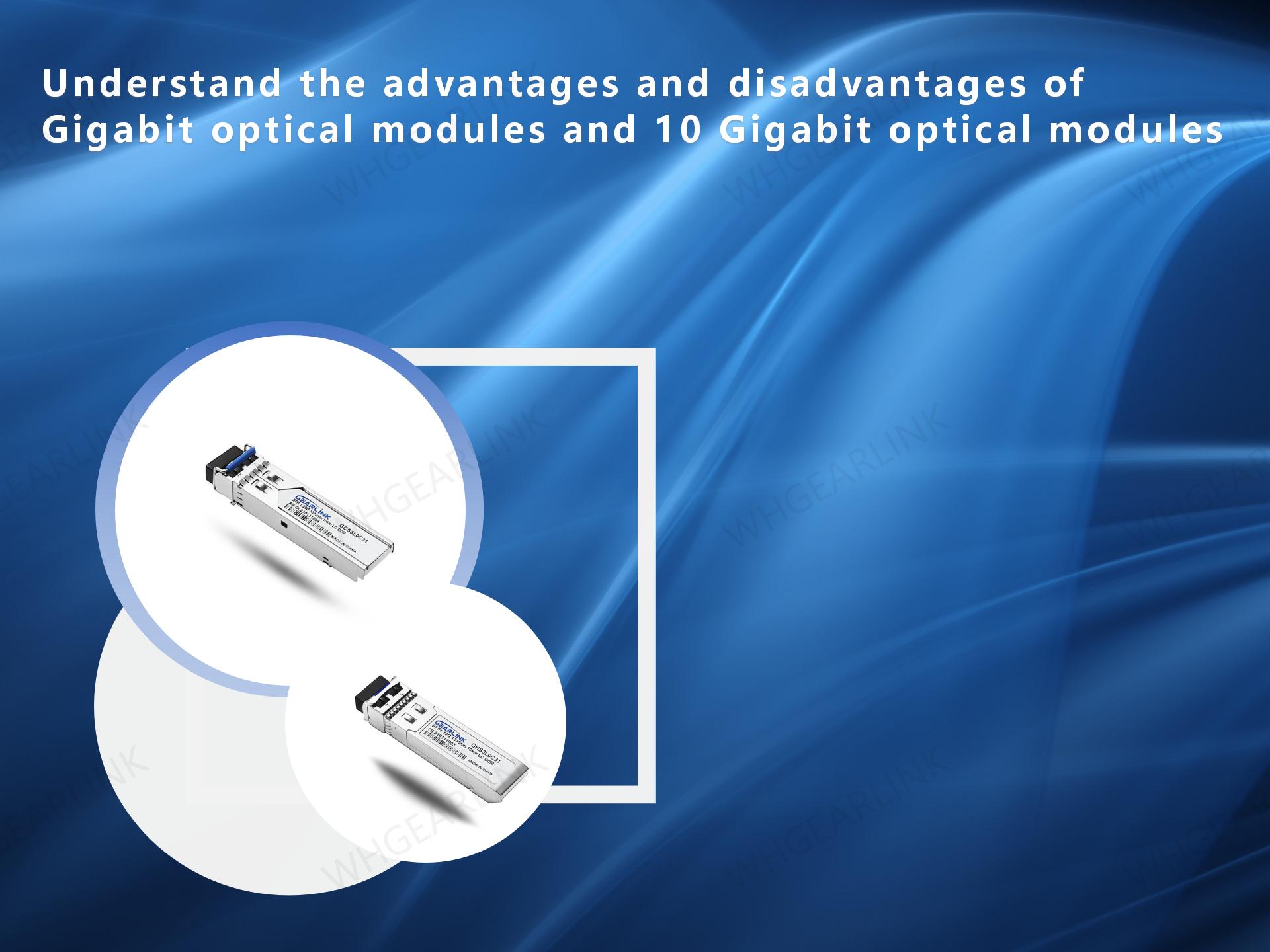Gigabit optical transceivers and 10 Gigabit optical transceivers are two common types of optical transceivers in the field of optical fiber communication. They are suitable for different network communication needs, and each has advantages and disadvantages. This article will focus on the advantages and disadvantages of Gigabit optical transceivers and 10 Gigabit optical transceivers, and discuss future development trends.
Optical transceivers are one of the core transmission devices in modern communication networks. Gigabit optical transceivers and 10 Gigabit optical transceivers, as important representatives, are widely used in fields such as data centers and cloud computing. They use optical fiber as the transmission medium, which has the advantages of high speed and high bandwidth. This article will start with the performance and application range of Gigabit optical transceivers and 10 Gigabit optical transceivers, and describe their advantages and disadvantages in detail.
The Gigabit optical transceiver is an optical transceiver that uses the Gigabit Ethernet standard, capable of high-speed data transmission and seamless transmission of video streams. Gigabit optical transceivers have the following advantages:
Gigabit optical transceivers have low price and cost, are relatively cheap and can be applied to many different application scenarios.
The gigabit optical transceiver has a small power consumption, which can save energy and reduce the failure rate during data transmission.
The scope of application of gigabit optical transceivers is very wide, and can be used from small buildings to data centers.
The Gigabit optical transceiver is a very mature and stable product with a high popularity in the market and is easy to configure and manage.
The disadvantage of Gigabit optical transceivers is that they cannot meet the needs of ultra-high bandwidth. With the continuous expansion of data centers and the acceleration of digital transformation, the demand for network bandwidth is also increasing. The transmission rate of gigabit optical transceivers is relatively low, which cannot meet the needs of large data centers and high-bandwidth applications, such as the transmission of high-definition video or high-throughput data transmission in large-scale cloud computing environments. Therefore, in terms of high bandwidth requirements, it is not suitable to use Gigabit optical transceivers.
Compared with Gigabit optical transceivers, 10 Gigabit optical transceivers can support higher transmission rates. 10 Gigabit optical transceivers are optical transceivers that follow the 10 Gigabit Ethernet standard. It can meet the demand for high-speed transmission in fields such as large-scale data centers, cloud services, and high-performance computing. In addition, 10 Gigabit optical transceivers have higher data capacity and lower latency, which can provide faster and more stable network connections. 10 Gigabit optical transceivers have the following advantages:
The transmission speed of the 10 Gigabit optical transceiver is high, which can basically meet the high-flow requirements such as high-definition video transmission and big data processing.
The 10 Gigabit optical transceiver can provide high reliability and stability, making it very suitable for high-demand application scenarios such as large data centers.
Compared with Gigabit optical transceivers, the disadvantage of 10 Gigabit optical transceivers is that 10 Gigabit optical transceivers are usually slightly more expensive than Gigabit optical transceivers, and have higher requirements for network equipment and infrastructure. Secondly, the deployment and maintenance of 10 Gigabit optical transceivers are relatively complex and require a higher level of technical support and management. And it has higher requirements on network equipment and infrastructure.
Gigabit optical transceivers and 10 Gigabit optical transceivers have their own advantages and disadvantages. For system integrators, it is necessary to flexibly choose different types of optical transceivers according to market demands and technical risks. Only in this way can they gradually improve their market competitiveness.


